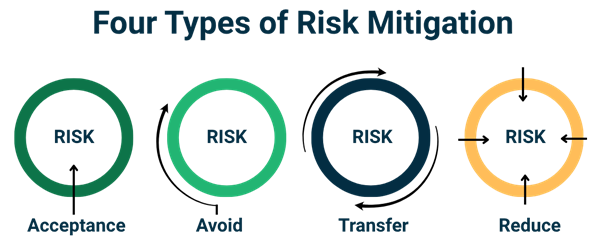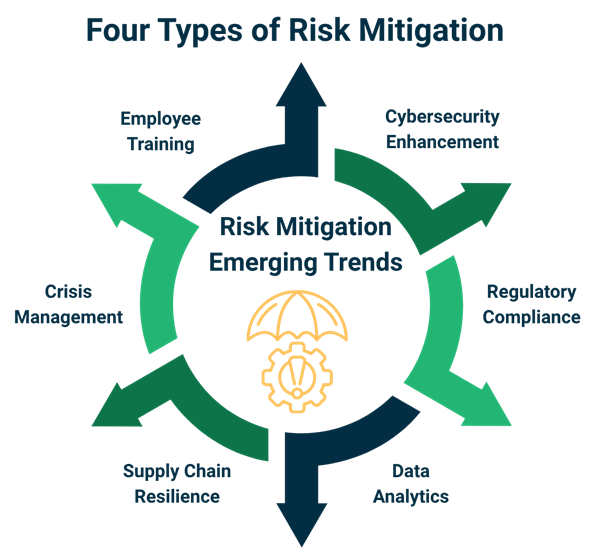
Quick Summary: Projects today don’t fail for lack of planning—they fail for lack of foresight. With more than $24 trillion in global capital projects at risk, traditional checklists and risk mitigation practices can’t keep pace with rising complexity. Risk mitigation in project management has evolved from static defense to predictive resilience—where data, sentiment, and real-time indicators reveal what humans can’t see. By embedding predictive intelligence, leaders transform risk visibility into a strategic edge—spotting weak signals early, aligning teams faster, and steering outcomes confidently before disruption strikes.
Why Modern Projects Demand Smarter Risk Mitigation
Is project success really becoming more fragile?
By the time most teams identify project risks, the damage is already done—schedules slip, budgets balloon, and trust erodes. The real problem isn’t poor planning—it’s the absence of early warning.
Global projects worth over $24 trillion are now operating in conditions more volatile than any previous decade—supply-chain shocks, regulatory shifts, cyber incidents, and rapid workforce turnover have redefined “business as usual.” (McKinsey & Company)
Yet most project environments still rely on static risk logs and quarterly reviews—tools built for a slower world. Research by the Project Management Institute (PMI) consistently shows that unmitigated risks remain the top cause of budget overruns and delivery shortfalls. (PMI)
Risk mitigation in project management is no longer about documenting potential threats—it’s about seeing around corners. The organizations that thrive are the ones turning data into foresight and foresight into control.
That’s where predictive intelligence changes the game. By uncovering risk patterns before they surface, analyzing stakeholder sentiment in real time, and alerting leaders to hidden stress points, predictive intelligence transforms risk mitigation from a defensive exercise into a strategic advantage.
What is risk mitigation in project management?
At its core, risk mitigation in project management is the continuous process of reducing the probability and impact of events that threaten project goals—time, cost, scope, and quality. It’s not a one-time checklist; it’s an adaptive system that spans the entire lifecycle—from initiation to closure.
More importantly, it’s a shift in mindset—from reactive firefighting to anticipatory resilience.
Why does this urgency persist?
- Projects are larger, faster, and more interconnected than ever before.
- Traditional risk tracking has reached its limit—complexity has outpaced control.
- Decision-makers expect fewer surprises and more predictability.
- Predictive intelligence is redefining how early and how accurately risks can be detected.
Organizations that treat risk mitigation as a strategic capability—not just a compliance exercise—consistently deliver stronger results, lower overruns, and higher stakeholder confidence.
Now that the stakes are clear, the next step is defining what effective risk mitigation in project management truly looks like—and how it can be built for today’s complexity.
- Avoidance – modify the plan to eliminate threat.
- Reduction – take actions to reduce probability or impact.
- Transference – shift impact to a third-party (e.g., insurance, vendor contract).
- Acceptance – consciously absorb the risk and monitor closely.
Effective risk mitigation in project management means each major risk has a clear response plan, an owner, budget reserve and monitoring trigger.
Monitoring & adaptive refinement
This is where many organizations fall short. Risk mitigation in project management must include continuous monitoring—tracking whether assumptions hold, triggers fire and responses are working. According to industry studies, organizations that treat risk mitigation as an ongoing feedback system rather than one-off task significantly improve outcomes.
And now the twist: injecting predictive intelligence into this architecture transforms it from periodic snapshots into real-time insight.

How predictive intelligence enhances risk mitigation in project management
Integrating a predictive layer elevates risk mitigation in project management from control to foresight. Imagine dashboards that alert you to emerging patterns of delay just before they escalate, or sentiment analysis of stakeholder feedback that flags disengagement long before scope creep occurs.
The predictive intelligence layer ingests historical project data, monitors real-time indicators, surfaces risk heatmaps, and offers data-driven decision making for next-step recommendations. Early risk detection unlocks mitigation lead-time. Stakeholder sentiment analysis reveals hidden risk vectors. Data dashboards bring clarity out of complexity.
To baseline your current risk profile and uncover hidden gaps before they escalate, schedule a TrueProject SnapShot now—see readiness in minutes.
Now that the framework is clear, let’s explore how to make risk mitigation part of your everyday project practices—step by step.
How To Implement Risk Mitigation in Project Management
What are the step-by-step building blocks for deployment?
Here’s a structured roadmap for embedding risk mitigation in project management:
Step 1: Establish risk governance 
Define roles and responsibilities (risk owner, governance board), integrate risk review into project steering meetings and set accountability mechanisms.
Step 2: Develop a risk mitigation framework & register
Create or update a risk register capturing risk ID, description, likelihood, impact, trigger, mitigation action, owner and status. This forms the base for risk mitigation in project management.
Step 3: Risk identification workshops and scenario mapping
Bring key stakeholders together early in the project to brainstorm, map scenarios, and categorize risks (technical, financial, operational, external).
Step 4: Prioritization and scoring
Use qualitative scales (High/Medium/Low) and quantitative where data exists (e.g., expected monetary value). For example, common metrics: risk score = probability × impact.
Step 5: Response planning
For each high-priority risk define mitigation action, contingency plan, budget and trigger threshold. Document these in your register.
Step 6: Integrate predictive intelligence workflows
Enable data-capture across project metrics, train models/triggers that highlight anomalies (e.g., cost burn rate acceleration, stakeholder disengagement), embed in dashboards. This elevates risk mitigation in project management from manual to proactive.
Step 7: Monitor, review and iterate
Establish a rhythm of risk review (weekly or bi-weekly in fast-moving projects). Track mitigation effectiveness, close completed actions, update scores, and feed new data to predictive models. Continuous improvement is the norm.
What tools and frameworks support this effort?
- AI-based risk heat-maps and matrices visualize where risk exposure sits.
- Predictive dashboards provide real-time monitoring of risk triggers.
- Predictive-analytics platforms (machine learning, Bayesian networks) uncover hidden patterns. For instance, Bayesian methods can update probabilities as new information flows in.
- Collaboration platforms integrate risk discussions, update registers and provide audit trail.
To see how predictive intelligence workflows and dashboards bring risk mitigation in project management alive, take a TrueProject Demo today and discover how early warning and actionable insight work in practice.
Implementation is not without its obstacles. So, let’s now examine the key challenges and cultural guardrails that high-performing organizations navigate when executing risk mitigation in project management.(pmi.org)
Challenges and cultural barriers in risk mitigation in project management
Why do even mature organizations stumble?
Despite defined frameworks, many organizations fail to achieve consistent results with risk mitigation in project management. According to PMI’s Pulse of the Profession 2023, only 37% of projects are completed on time and within budget — with poor risk management cited among the top three causes. (pmi.org)
The root causes often lie less in process and more in behavior. Leaders underestimate how culture, communication, and incentives can undermine even the best-designed frameworks.

Cultural inertia and ownership gaps
Risk mitigation in project management demands accountability. Yet, too often, ownership is diffused: everyone assumes “someone else” is managing risk. Teams celebrate delivery wins but avoid surfacing risks early for fear of perceived failure.
Creating a culture that rewards early escalation, transparency, and learning from near misses is vital. As W. Edwards Deming observed, “Without data, you’re just another person with an opinion.” Predictive intelligence gives that data — objective, timely, and free from bias.
Data bias and decision latency
In traditional models, risks are logged manually. That means human bias influences how they’re rated or escalated. Decision latency—the lag between issue detection and corrective action—becomes a silent killer.
Predictive analytics short-circuits that latency by continuously analyzing trends, alerting leaders before performance thresholds break. The result: informed decisions, faster.
Change fatigue and tool overload
Teams often juggle too many systems. Introducing yet another “risk tool” can spark resistance. The key is integration — embedding risk mitigation into existing workflows, dashboards, and communication channels.
Predictive intelligence solutions integrate within project ecosystems, complementing rather than replacing established tools.
See how TrueProject eliminates decision latency and data bias. Watch a demo to experience predictive risk alerts that keep every project step ahead.
Once cultural and systemic barriers are addressed, leaders can measure whether risk mitigation in project management is actually delivering results.
Measuring the Effectiveness of Risk Mitigation in Project Management

What gets measured truly improves
As Peter Drucker said, “You can’t manage what you don’t measure.” Risk mitigation in project management needs measurable indicators to prove value and guide refinement.
Leading organizations track metrics such as:
- Risk closure rate – Percentage of identified risks mitigated or retired over project lifecycle.
- Variance at completion (VAC) – Financial delta between forecast and actual cost after mitigation efforts.
- Schedule performance index (SPI) and cost performance index (CPI) – Derived from earned-value analysis to show impact of mitigations on efficiency.
- Residual risk exposure – Post-mitigation probability × impact score for key risks.
- Predictive accuracy score – Measures how often predictive indicators correctly flagged future issues.
According to a 2024 Gartner report, organizations that use predictive analytics in project risk management improve delivery reliability by 25–30%.
How predictive intelligence transforms measurement
Predictive systems don’t just display metrics—they learn. They benchmark performance across projects, analyze patterns of risk recurrence, and forecast future exposure.
This feedback loop turns risk mitigation in project management into a living intelligence system rather than static documentation.
Explore how predictive intelligence can help you measure what matters most and refine strategy continuously. Schedule a discussion with TrueProject experts to align insights with your enterprise goals.
With measurement in place, the focus shifts to where risk mitigation in project management is headed next—particularly in an AI-first world.
What the Future of Risk Mitigation in Project Management Looks Like
Are we entering the era of anticipatory governance?
The future belongs to organizations that blend human judgment with machine foresight. Risk mitigation in project management will evolve toward anticipatory governance—where systems sense weak signals, simulate outcomes, and recommend pre-emptive actions before crises unfold.

From reactive to cognitive risk management
Cognitive analytics, natural language processing, and sentiment intelligence will analyze stakeholder communications, progress reports, and even meeting notes to detect tone shifts or delivery anxiety that may signal future risk.
For example, AI tools can analyze thousands of progress logs to identify correlations between communication lag and missed deadlines—surfacing invisible patterns that human teams may overlook.
Risk networks, not risk lists
Future risk mitigation frameworks will map interdependencies across entire portfolios, visualizing cascading risk effects. A small procurement delay in one project could ripple across multiple programs. Predictive intelligence platforms will quantify these linkages in real time.
Ethical and governance considerations
As predictive systems gain autonomy, governance frameworks must ensure transparency and explainability. Leaders need to know why the system recommends a mitigation action, not just what it suggests.

Future-proof your risk mitigation strategy with predictive foresight. Schedule a discussion with TrueProject to explore adaptive governance for your portfolio.
Conclusion: Reframing Risk Mitigation in Project Management for a Predictive Era
The nature of risk mitigation in project management has evolved. It’s no longer a reactive discipline—it’s a strategic differentiator. Projects that once depended on instinct now demand insight. In an environment where every delay compounds cost and reputation, the ability to foresee risk before it surfaces is what separates resilient organizations from the rest.
Predictive intelligence redefines that ability. It shifts risk management from hindsight to foresight—delivering clarity in uncertainty, accuracy in decision-making, and confidence in execution. By transforming scattered data into leading indicators, it empowers leaders to act—not react—with precision and purpose.
This is where TrueProject makes the difference. It isn’t another dashboard or analytics tool—it’s a predictive intelligence layer built to keep projects safe from the unknown. TrueProject continuously senses emerging risks, interprets stakeholder sentiment, and surfaces the early warnings that traditional governance can’t see. It gives decision-makers the one thing they rarely have in complex projects: time—time to respond intelligently, safeguard investments, and lead with certainty.
In a world where risk has become constant, TrueProject turns every project into a system of continuous insight—where leaders not only anticipate what’s next but shape it.
See how TrueProject transforms uncertainty into foresight. Request a demo and experience how predictive intelligence protects your outcomes before risk even begins.
FAQs on Risk Mitigation in Project Management
1. What is risk mitigation in project management?
It’s the process of identifying, assessing, and reducing potential threats that could impact project goals such as cost, schedule, and scope. It combines proactive planning, real-time monitoring, and adaptive control to minimize uncertainty and maximize delivery success.
2. How does predictive intelligence improve risk mitigation in project management?
Predictive intelligence enhances visibility by analyzing historical and live data to forecast potential issues. It enables early detection, automated alerts, and evidence-based recommendations, empowering project leaders to act before risks escalate.
3. What are the most effective risk mitigation techniques?
Avoidance, reduction, transference, and acceptance remain the four foundational approaches. Today’s best practices blend them with AI-driven analytics, scenario simulations, and sentiment monitoring for a proactive risk strategy.
4. How can you measure the success of risk mitigation efforts?
Metrics such as risk closure rate, residual exposure, cost/schedule performance indexes, and predictive accuracy scores reveal how effectively risks are being identified, managed, and neutralized throughout the lifecycle.
5. What future trends will shape risk mitigation in project management?
Expect a shift toward cognitive analytics, interdependent risk networks, and ethical AI frameworks. Predictive systems will drive anticipatory governance—helping organizations see what’s next, not just what’s now.






